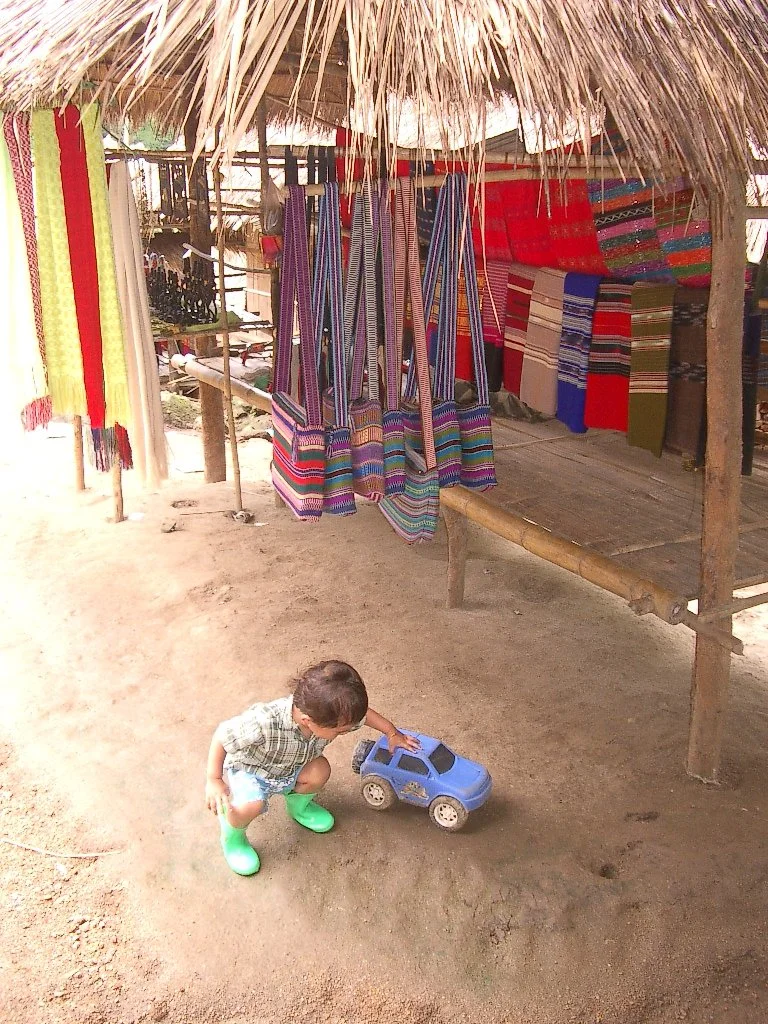The Kayan are a subgroup of the Red Karen (Karenni people), a Tibeto-Burman ethnic minority of Myanmar (Burma). The Kayan consists of the following groups: Kayan Lahwi (also called Padaung, ပဒေါင် [bədàʊɰ̃]), Kayan Ka Khaung (Gekho), Kayan Kadao, Kayan Lahta (Zayein people), Kayan Ka Ngan, Kayan Kakhi, and sometimes, Bwe people (Kayaw). They are distinct from and not to be confused with the Kayan people of Borneo.
Padaung (Yan Pa Doung) is a Shan term for the Kayan Lahwi (the group in which women wear brass neck rings). Kayan residents in Mae Hong Son province in northern Thailand refer to themselves as Kayan and object to being called Padaung, as corroborated by Khin Maung Nyunt in The Hardy Padaungs (1967). On the other hand, Pascal Khoo Thwe calls his people Padaung in his 2002 memoir, From the Land of Green Ghosts: A Burmese Odyssey.
In the late 1980s and early 1990s, due to conflict with the military regime in Myanmar, many Kayan tribespeople fled to Thai border areas. Among the refugee camps set up, there was a "long neck" section, which became a tourist site.
According to U Aung Roe (1999), the Kayan number about 90,000 in Shan State (around the Pekhon Township area), about 20,000 around Kayin State, and 70,000 in Kayah State (around Demawso and Loikaw). A 2004 estimate put the total population at approximately 180,000.[5] About 600 Kayan reside in three villages open to tourists in Mae Hong Son, including the Ban Mai Nai Soi refugee camp.
According to their oral history, the Kayan settled around Demawso in Kayah State in 739 AD. Today, they still reside there, in Loikaw, and Thandaung, as well as in the southern region of Shan State and in Pyinmana Township.
There are three Kayan villages in Mae Hong Son province of Thailand. The largest is Huay Pu Keng, close to the Thai–Myanmar border; Huai Seau Tao is a commercial village opened in 1995; and Nai Soi, many of whose residents moved into a refugee camp in September 2008.
Brass coils
Women of the Kayan tribes identify themselves by their forms of dress. In the Kayan Lahwi tribe, females are known for wearing neck rings, brass coils that are placed around the neck, causing it to lengthen.
Girls first start to wear rings when they are around five years old. Over the years, the coil is replaced by a longer one, and more turns are added. The weight of the brass pushes the collar bone down and compresses the rib cage. The rings can stretch necks to a length of about 15 inches (38 cm), pushing down the collarbone, compressing the rib cage, and pulling up about four thoracic vertebrae into the neck. Many theories regarding this practice have been suggested. Anthropologists have hypothesized that the rings protected women from becoming slaves, making them less attractive to other tribes. It has also been theorised that the coils originate from the desire to look more attractive by exaggerating sexual dimorphism, as women have more slender necks than men. Another idea is that the coils give women the appearance of a dragon, an important figure in Kayan folklore. The coils might be meant to protect from tiger bites, perhaps literally, but probably symbolically.






















































